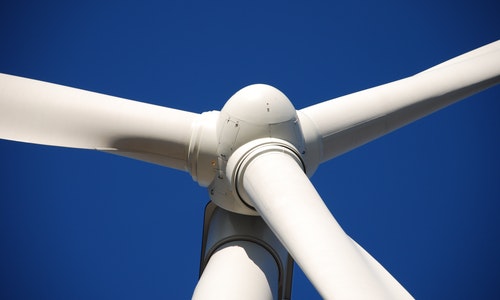Wind currents occur as a result of uneven heating of the atmosphere by the sun, the rotation of the earth and irregularities in the surface of the same. Wind patterns change from place to place and change when they come into contact with bodies of water, vegetation, and differences in the terrain. The next section explains briefly but precisely how a windmill works. By supplying them with more extensive information, readers will learn that understanding the technological processes initiated by a wind turbine is simple. Because the way a windmill works follows a simple process.
So we can continue to rely on lay terms to explain it.
We experimented with different options and designs when modern wind turbines were built. Nowadays, the universal mechanized principle is to operate the turbines using only three blades located around a rotor that is connected to an axis. Two-blade, even single-blade mills have been tested. But those with three leaves work best.
Windmills initially used four blades or more
As the name implies, the pump gets its source of energy from the air currents. An interesting fact is that the most modern turbines rotate in the direction of clockwise. Depending on the wind speed, the current turbines can operate at rates as low as four meters per second, up to speeds of 15 meters per second.
Modern windmills can make the most of subtle wind gusts
Many green energy advocates and NGOs describe the wind generator process more succinctly, correlating it closely with environmental sustainability initiatives.
Once the turbine blades rotate an axis located inside a box located at the top of the turbine, the gearbox comes into operation and provides higher rotation speed. An internal transformer of the turbine converts electricity into voltage susceptible to distribution to the national grid.
Primary purposes of modern wind turbines
By this point, most readers will know that modern wind turbines have the primary goal of producing wind electricity with minimal environmental impact. The following notes are only to point out the advantages of this sustainable initiative.
The environmental impact that it entails is, however, controversial. We will also see this point later.
Whether they are located in urban or rural sectors, they are usually installed in areas of low, middle-class socioeconomic population. It is criticized that in this way his right to a comfortable environment is being impacted. Also, nature lovers continue to discuss the impacts that these structures could have on the migration patterns of some bird species.
 |
 |
 |
As already mentioned, the primary function of a wind turbine is to use the energy generated by the wind and convert it into usable and renewable energy. On a smaller scale, independent users can place their wind turbine and produce their electricity at no cost.
